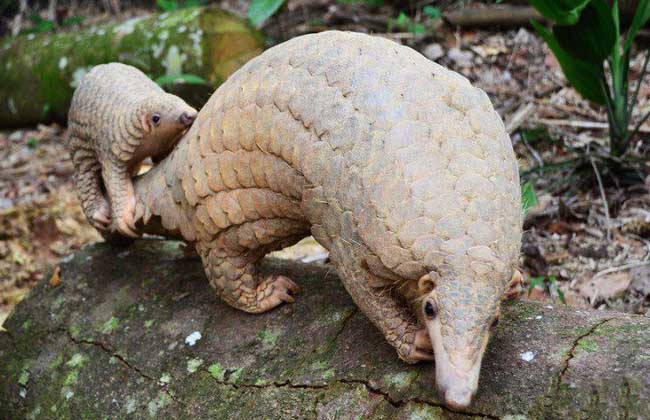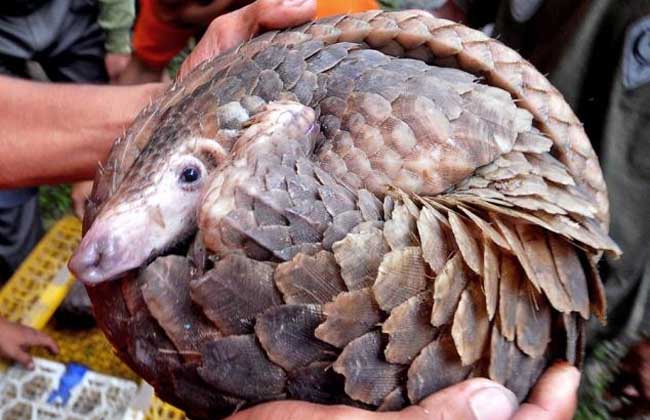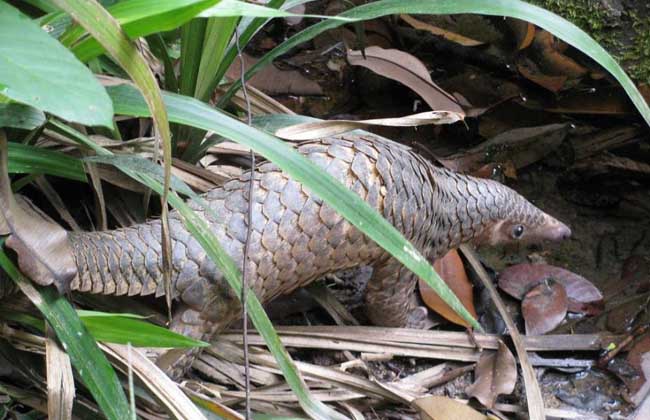Pangolin culture technology video
Pangolin is a mammal of the pangolin family, which has high medicinal and edible value. at present, artificial breeding of pangolins has been successful, with less investment and rich profits, and can get a lot of foreign exchange for the country. It is a promising aquaculture industry. Let's take a look at the pangolin breeding technology video.

Culture value of pangolin
Pangolin scale nail and meat can be used medicinally, scale nail taste salty, cold, with swelling and ulceration, wind and activating collaterals, breast under the function, the main treatment of carbuncle sore swelling, wind-cold-damp arthralgia, menstruation, milk blockage and other diseases, flesh sweet, astringent, warm, with insecticidal, blood, attack and disperse blood stasis, the main treatment of arthralgia, amenorrhea and other diseases, blood is a specific drug for the treatment of gastric and duodenal ulcers. In addition, pangolin meat is edible, the meat is fine and delicious, it is a delicacy at banquets and banquets, and the breeding value is very high!
The living habits of pangolin
1. Environment: pangolins grow in tropical and subtropical areas, live in moist areas in foothills, hills or plains, especially like muddy land mixed with small stones, dig holes to live, and caves are often built in the soil zone, with a depth of 2-4 meters and nests at the end.
2. Activity: pangolins often hide in holes during the day and come out at night. When walking, the feet of the front feet touch the ground, walk on the back of claws, can climb trees, often use the tail as an accessory organ, vision is weak, when the enemy is frightened, it is rolled into a ball to protect the head and abdomen with armour, so it is very easy to catch.
3. Eating habits: pangolins mainly eat termites, ants, bees and other small insects. When foraging, break part of the nest with the long claws of the forefoot, then insert the ant hole with a kiss and lick the ants with a sticky, retractable tongue.
4. Reproduction: pangolins are usually cohabited by males and females, and generally enter the reproductive stage when their body weight is more than 2 kilograms. generally, pangolins are in estrus from May to July, give birth from November to December, and the pregnancy period is 5-6 months. the male is in estrus all the time and does not show periodicity. The female has 2-5 estrus cycles and 12-25 days of estrus, and the female no longer estrus after conception. Males look for females everywhere when they are in estrus. During estrus, males and females cohabit and separate after mating. A has one child a year. Under the condition of artificial feeding, it can give birth to three births in 2 years.
Culture preparation of pangolin
1. Site setting: the breeding ground of pangolin should choose the shady place near the mountain to build the field, dig out the topsoil first, then beat it into a mixed soil with quicklime, coarse sand and yellow mud, and then pour a smooth cement floor after drying it. Then use stones or bricks to build a 2-meter-high fence around the cement ground, surround it with cement to make its surface smooth, so as to avoid pangolin digging holes to escape. Then put the topsoil back to the site, pile it into a rockery, plant trees, grapes, flowers and plants on the mountain, adjust the microclimate in the field, and make it warm in winter and cool in summer. The rockery inside the wall should not be more than 1.5 meters high, and 1 meter away from the wall, a small pool will be built beside the rockery for pangolin to drink and swim. The size of the site depends on the amount of feed, generally raising 2 pairs for every 10 square meters.
2. Feed preparation: pangolins have specific food habits and specialize in ants. It is very difficult to catch termites artificially under artificial feeding conditions, because each pangolin needs to eat 80,120g termites a day, and generally a nest of termites is no more than 1000 grams. Moreover, the ant nest is difficult to find, even if there is an ant nest, it takes a lot of effort to dig the nest, so the following measures must be taken.
① artificial cultivation of termites: the method of artificial cultivation of termites is to dig holes in the ground, rot the branches and leaves of pine trees, and introduce termite species for mass reproduction.
② artificial feed preparation: the artificial feed formula should be reasonable, the proportion of various ingredients should be appropriate, and the prepared feed should be palatable and like to eat. Pangolins, which have just been caught for seed use, begin to refuse to eat artificial feed, must be fed with termites or black ants, and then gradually change the feed ratio until they gradually get used to artificial feed, and those who refuse to eat for a long time can also be fed artificially. Some baits can often be placed on the rockery to attract termites, ants and other insects, and black lights can also be installed in the field to attract insects such as moths for pangolin consumption.
Culture techniques of pangolin
1, cub feeding: newborn pangolin weighs 90-130 grams, eyes closed, scaleless, light white, half-month-old eyes open. One month later, the weight gain was 200-500 grams, and the scales were gradually keratized, mostly dark brown. After 2 months, the pangolin can go out with the mother to look for food. 6-month-old offspring can weigh up to 1500-2000 grams and can live independently without their mothers. Young animals born in the first year can mature sexually and breed in the second year.
2. Feeding management: the feeding room should be disinfected regularly, the soil of drinking water and dung tank should be changed frequently, the eating basin should be washed once a day without moldy feed, and the pangolin should be fed regularly and quantitatively once a day, 150-200 grams of artificial feed each time. After feeding, the pangolin was put into the activity ground for 2-3 hours. Pangolins are accustomed to wild cave life and have poor adaptability to changes in ground temperature. Once the temperature and humidity of the feeding room is not properly controlled, it is easy to catch cold and cause pneumonia and die. The room temperature should be controlled at 18-25 ℃, and the relative humidity should be controlled at 60%. 70%, so that the feeding room can basically be warm in winter and cool in summer, which is conducive to the growth and development of pangolins.
3. Disease prevention and control: pangolin changes from wild to domesticated, and its food and environmental conditions change greatly, which sometimes causes temporary physiological maladjustment. Some disinfected river sand is accumulated in the field, that is, 1000 times liquid of 90% crystal trichlorfon is mixed in the river sand. After mixing evenly, pangolin sand bath can prevent the occurrence of diseases and make pangolin phosphorus tablets smooth and plump.
① lice disease: occurs on the body surface, the body surface is bathed with 10 ml of lice essence mixed with 3-4 kg of water.
Related
- A course of planting techniques and methods on how to grow carrots
- How to plant the latest tulips?
- Is it better to pick tea in the morning or in the afternoon? When is the best time for tea to be picked? what is the third or fifth tea?
- Launch Yuanxiao Happy combination Haocha + Tea Yuan healthy Taste
- Penghu Tourism "Fireworks 20 Parade with You"
- 2022 West Lake Happiness holds "Digital Revitalization Voucher" and draws iphone13 and laptop.
- Banqiao Fuzhou social houses are designed to change start-up combined with police elimination to create a safe and livable environment
- The convenient measure of "mechanical weeding" in Xinbei has been abused and the Agriculture Bureau has imposed heavy penalties on the illegal land consolidation.
- Changgeng University Joins Hands with Four Memory Factories to Rescue Memory Talent Shortage
- The list of Taiwan's top 100 MVP managers is listed by the Director-General of the Farmers' Association of Sanxia District.



